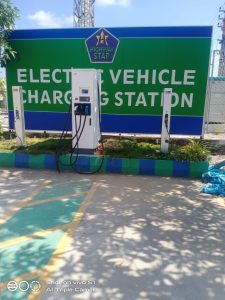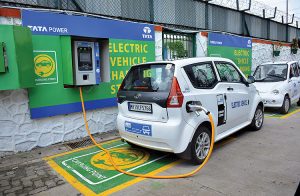Introduction
India’s EV industry is rapidly gaining momentum in 2025, establishing the country as a key player in the global shift toward sustainable transportation. With a projected market size nearing USD 114 billion by 2029, up from just USD 3.2 billion in 2022, the growth is nothing short of explosive. Backed by government support, local innovation, and rising public awareness about climate change, India is not just catching up—it’s leading. This shift is being shaped by several key trends that every business, investor, and policymaker should watch closely.
1. Government Policies Sparking Electric Momentum
Central and state governments in India have emerged as strong advocates of electric mobility. Flagship programs like FAME II have offered thousands of crores in subsidies, making electric mobility more affordable for the masses. The policy also encourages local manufacturing and the development of high-efficiency components, thereby reducing the nation’s dependence on imports.
On top of that, the Production Linked Incentive (PLI) scheme for battery storage is creating a robust foundation for future supply chains. States such as Delhi, Gujarat, and Tamil Nadu have implemented tailored policies offering tax exemptions, interest subsidies, and fast-track permits for manufacturing facilities. Together, these initiatives form a supportive framework that accelerates clean mobility adoption and drives industrial growth.
2. Two-Wheelers and Three-Wheelers Lead the Charge
India’s streets are buzzing with electric scooters, motorcycles, and auto-rickshaws. These segments, which account for the majority of electric vehicle adoption, are thriving due to their affordability and high utility in crowded urban settings. Their compact size, low maintenance costs, and wallet-friendly energy usage make them a go-to option for daily commuters.
The expansion of last-mile delivery networks has played a crucial role in accelerating EV adoption. Delivery personnel and ride-hailing drivers are switching to electric options to maximize daily earnings. Homegrown companies like Ola Electric, Ather Energy, and Hero Electric are innovating aggressively, releasing new models with better mileage, stylish designs, and advanced safety features, further boosting demand in both metros and Tier-2 cities.
3. Fast-Expanding Charging Infrastructure
Reliable charging access remains a cornerstone of electric mobility. In response, India is witnessing an unprecedented rollout of public and private charging stations. Tata.ev, along with partners like ChargeZone and Statiq, is leading a mission to double the nation’s charging network over the next few years. By 2027, the goal is to reach 400,000 accessible charging points across highways, urban centers, and rural regions.
Shopping malls, housing societies, petrol stations, and even cafes are joining the movement, installing smart chargers compatible with various vehicle types. Mobile apps now help users locate, book, and pay for charging seamlessly. These innovations not only make life easier for users but also build confidence in electric mobility.
4. Battery Technology Redefining Performance
A major force behind the electric mobility surge is the rapid evolution of battery technologies. Firms are striving to create batteries that are more efficient, lightweight, and quicker to charge. Himadri Speciality Chemical, for example, is collaborating with global firms to set up the nation’s first silicon-carbon battery facility in Odisha. These next-gen materials can boost energy density by over 20%, translating into longer range and reduced charging time.
Meanwhile, large battery manufacturers such as Amara Raja and Exide are investing in cell production facilities, reducing India’s reliance on overseas suppliers. Solid-state battery research is also gaining traction, with the potential to revolutionize safety and efficiency. These developments make electric vehicles more appealing and viable for the mass market.
5. Global Giants Betting on India
India’s potential as a clean mobility powerhouse is attracting investments from global automakers. Vietnamese company VinFast is investing USD 2 billion in a massive production facility in Tamil Nadu, with an initial manufacturing capacity of 50,000 units per year. This plant will serve not just Indian consumers but also emerging markets in Africa and Southeast Asia.
Other major players like BYD, Hyundai, and Stellantis are also entering or expanding their footprint in India. Their entry promises greater variety, global-quality engineering, and new partnerships with Indian companies. This not only raises the bar for performance and design but also boosts local employment and supply chain development.
6. Record-Breaking Adoption in 2025
India reached a significant milestone in 2025 by recording its highest-ever sales of electric vehicles. In April alone, 167,629 electric units were sold—a 45% jump compared to the same month last year. This trend clearly indicates rising consumer confidence and growing public trust in electric technology.
Several factors contribute to this spike: reduced operating costs, higher petrol and diesel prices, better access to financing, and an increasing awareness of carbon emissions. First-time car buyers are now more open to clean mobility options, especially as driving ranges increase and maintenance becomes less of a concern. Dealerships are also adapting, offering test drives, easy financing, and extended warranties to attract hesitant buyers.
7. Focus on Inclusive and Sustainable Growth
The clean mobility revolution in India is not confined to urban centers—it’s spreading to smaller towns and rural districts as well. To enable long-distance EV travel, the government is constructing electric corridors along the Golden Quadrilateral highway system. Public transport is undergoing electrification, with more than a dozen states incorporating electric buses into their fleets.
Rural entrepreneurs are adopting electric mobility for agricultural transport, delivery, and passenger services. Battery-swapping stations and solar-powered charging units are being introduced in areas with limited grid access. At the same time, training programs are equipping local technicians with the skills to maintain and repair electric vehicles, ensuring sustainable employment opportunities.
Conclusion
India’s electric mobility landscape is undergoing a profound transformation. With the help of strong government backing, pioneering technology, and growing consumer enthusiasm, the country is on track to become a global leader in clean transportation. Businesses have a unique opportunity to align with this momentum—whether through product innovation, strategic partnerships, or clean tech investment. As the infrastructure matures and adoption deepens, the clean mobility journey in India is just beginning—and it promises to be a game changer for the economy and environment alike.
Image Credit: Autocar Professional EV Reporter
🔗 For more updates and stories, follow: Udyamee Magazine











